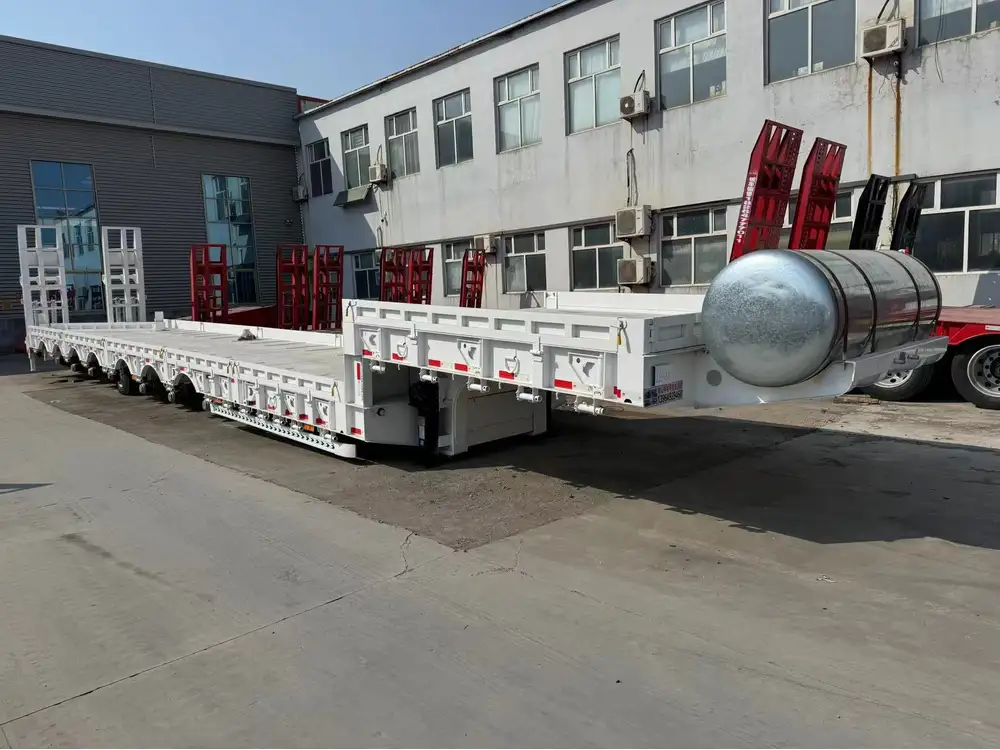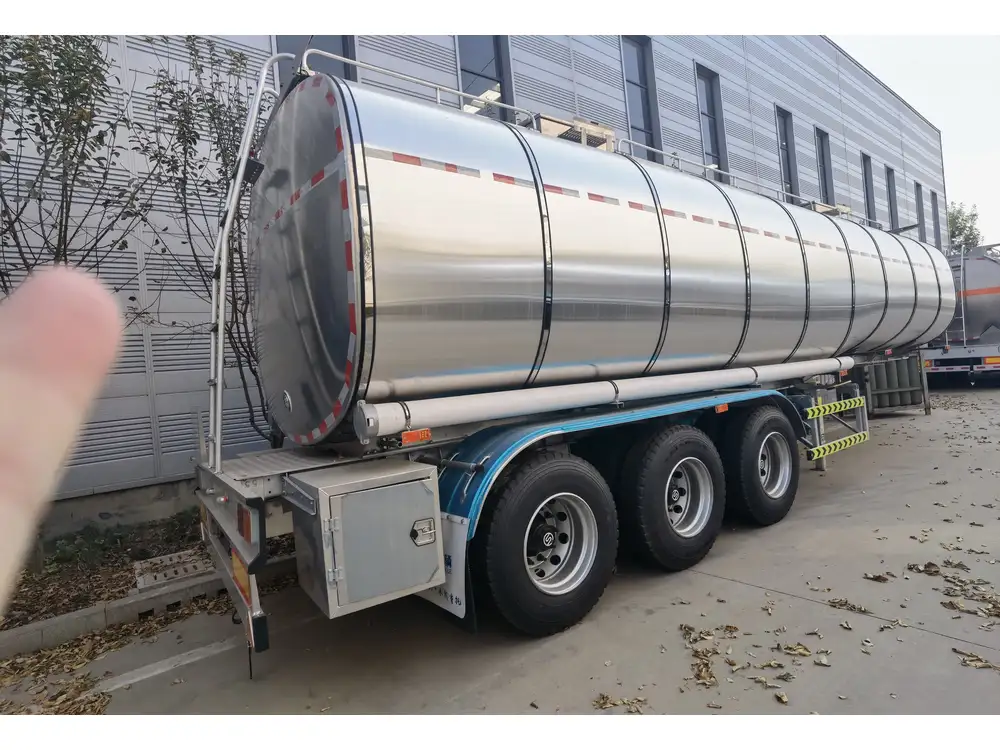Changing a slack adjuster on a semi-trailer is a critical maintenance task that ensures optimal performance and safety. Slack adjusters are essential components of the braking system, directly influencing how effectively brakes engage. This guide provides a step-by-step approach, covering tools needed, safety precautions, and detailed instructions that go beyond surface-level advice.
Understanding Slack Adjusters
What is a Slack Adjuster?
A slack adjuster manages the linkage between the brake chamber and the brake shoe, thus controlling the movement of the brakes. When the brake pedal is pressed, the slack adjuster compensates for any wear, ensuring that the brake shoes engage properly against the drum. Over time, slack adjusters may wear out or become ineffective, leading to improper brake function, increased stopping distances, and potential safety risks.

Types of Slack Adjusters
| Type | Description |
|---|---|
| Manual Slack Adjuster | Requires manual adjustments to compensate for brake wear. |
| Automatic Slack Adjuster | Self-adjusting and compensates for slack as the brake shoes wear down. |
Why Change a Slack Adjuster?
Regularly replacing slack adjusters is vital for maintaining the braking system’s efficiency. Neglecting this maintenance can lead to:
- Uneven braking, causing hazardous driving conditions.
- Increased wear on brake components.
- Higher maintenance costs in the long run.
Tools Needed for the Job
Before initiating the replacement process, ensure you have the following tools at your disposal:
| Tool Name | Purpose |
|---|---|
| Wrench Set (metric & SAE) | To remove and install slack adjusters |
| Torque Wrench | To ensure proper installation torque |
| Socket Set | For efficient fastening and loosening of bolts |
| Brake Clean Spray | To clean components during the process |
| Safety Glasses | To protect your eyes from debris |
| Glove Set | To protect your hands while working |
| Jack Stands | For safely lifting and supporting the semi-trailer |

Safety Precautions
Prior to commencing the replacement, follow these safety measures:
- Park on Level Ground: Ensure the semi-trailer is parked on a flat surface to prevent accidental rolling.
- Engage the Parking Brake: Engage the parking brake to keep the vehicle in place.
- Use Safety Stands: Lift the trailer and use jack stands to support it securely.
- Wear Protective Gear: Always wear gloves and safety glasses to provide a barrier against injuries.
Step-by-Step Guide to Changing the Slack Adjuster
Step 1: Preparation
- Identify the Slack Adjusters: Locate the slack adjusters on both sides of the trailer. These are typically attached to the brake chambers.
- Inspect Existing Adjusters: Check for visible signs of wear, cracking, or damage that may need attention.

Step 2: Removing the Old Slack Adjuster
- Loosen the Fasteners: Using the appropriate wrench or socket, loosen and remove the nuts securing the slack adjuster to the brake chamber.
- Detach the Slack Adjuster: Carefully pull the slack adjuster away from the brake chamber and the brake rods. Make note of how it was connected for easier installation of the new one.
- Check the Components: Inspect associated components for wear or damage, particularly the brake rods and chambers.
Step 3: Installing the New Slack Adjuster
Align the New Adjuster: Position the new slack adjuster in the same orientation as the old one, ensuring it matches the connection points.
Secure the Fasteners: Hand-tighten the bolts and nuts, then use a torque wrench to tighten them to the manufacturer’s specifications. This ensures that the slack adjuster is firmly secured without being overtightened.
| Torque Specifications | Slack Adjuster Type |
|---|---|
| 35-40 ft-lbs | Manual Slack Adjuster |
| 60-70 ft-lbs | Automatic Slack Adjuster |
Step 4: Adjusting the New Slack Adjuster
- Set Initial Adjustment: If using a manual slack adjuster, make an initial adjustment to ensure that the brake shoes are in the correct position away from the drum. For automatic adjusters, ensure they are in the correct position for self-adjustment.
- Check the Brake Clearance: For manual adjusters, measure the distance between the brake shoe and the drum. The ideal gap is typically about 1/8 inch. Adjust as needed using the adjustment screw on the slack adjuster.

Step 5: Testing the Brakes
- Reattach Components: Ensure that all connections are secure, including the brake rods attached to the slack adjuster.
- Lower the Trailer: Safely remove the jack stands and lower the trailer.
- Test Brake Functionality: Start the semi-trailer, pump the brakes a few times and engage the parking brake. Conduct a test drive at low speeds in a safe area to evaluate brake efficiency and listen for unusual sounds.
Step 6: Final Inspection
- Inspect for Leaks: After testing, check for any air leaks around the brake chambers and new slack adjusters.
- Perform a Visual Check: Look over all areas related to the slack adjuster for any signs of excessive wear or misalignment.
Frequently Asked Questions (FAQs)

How Often Should Slack Adjusters Be Changed?
While there is no one-size-fits-all answer, it’s advisable to check slack adjusters during routine maintenance (every 5,000 to 10,000 miles). If there are signs of irregularities or if they are not functioning correctly, they should be replaced immediately.
Can I Replace a Slack Adjuster Myself?
Yes, if you have mechanical expertise and the proper tools, replacing a slack adjuster is feasible. However, if you’re unsure or uncomfortable, it’s best to consult a professional mechanic.
What Are the Symptoms of a Failing Slack Adjuster?
Signs of a failing slack adjuster include uneven braking, abnormal noises during braking, or the inability to hold the proper brake adjustment. It’s crucial to address these issues immediately.

Is There a Difference Between Automatic and Manual Slack Adjusters?
Yes, the primary difference lies in functionality. Automatic slack adjusters will adjust themselves while driving, whereas manual slack adjusters require periodic adjustments by the operator.
Can Faulty Slack Adjusters Cause an Accident?
Yes, malfunctioning slack adjusters can impair braking efficiency, increase stopping distances, and lead to possible accidents. Regular inspections and timely replacements are essential for safety.
Conclusion
Effectively managing the replacement of slack adjusters on semi-trailers is not just a maintenance task; it’s a vital aspect of ensuring safety on the road. By understanding the components involved, using the right tools, and following detailed steps, operators can ensure their vehicles are safe and reliable. Regular checks and proactive maintenance can avert potential problems, leading to longer-lasting performance and enhanced safety on every journey.



